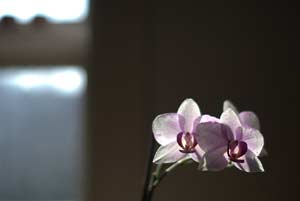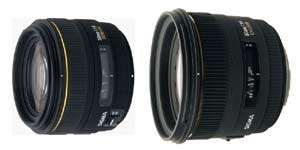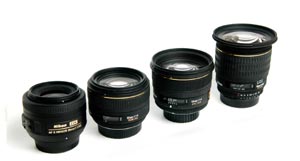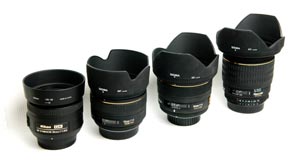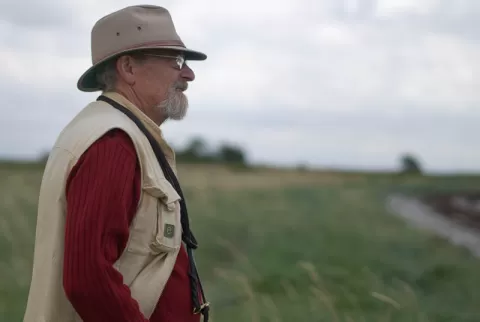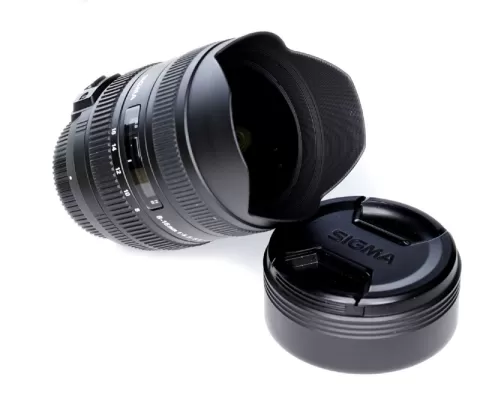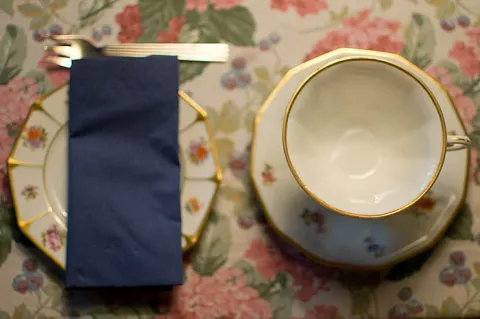I have always loved bright lenses. If money was no issue, all my lenses would have f/1.4 and f/1.8 stamped on them. A few slow ones would be f/2.8, but only the slow ones...
I have always loved bright lenses. If I had no quarrels with money, my bag would contain at least a 24mm f/1.4, a 50mm f/1.4 and an 85mm f/1.4. Of all these I only have the 50mm right now, not least because the others are just hilariously expensive!
My goto-lenses have been the 17-55 f/2.8 and the 70-200 f/2.8. I also use a Sigma 10-20mm a lot, but its maximum aperture of 3.5-4.5 means that it likes light.
The fastest lens most people have, is a 50mm f/1.8. This lens used to be the lens that came with all cameras back in the heydays of film and manual focus. Today most people use kit lenses with lousy brightness. And they have no idea what they are missing!
Back when I started shooting, I used a Minolta 58mm f/1.4 and that was (almost) as bright as they come. Until a year or so ago my fastest Nikon lens had a minimum aperture of f/1.8 -- a 50mm f/1.8 and an 85mm f/1.8, which are both excellent lenses and both available at very reasonable prices. I can warmly recommend them to people who want fast primes at good prices. Look for them used, and you are most likely able to get them at bargain prices. They are also reasonable from new, if you don't like buying used.
Some time ago I took the fast lens concept one step further and acquired a Sigma 50mm f/1.4. The reasons that I went for the Sigma rather than the Nikkor ditto were several: I read some great reviews of the Sigma, naming it a well built and sharp lens with a very shallow depth of field. I loved the fact that the Sigma was an AF-S lens (HSM in Sigma-lingo), and I have always liked Sigma's lenses. They are generally good performers, sharp and very reasonably priced. Nikon's f/1.4 50mm was an old fashioned screwdriver AF lens at that time. Nikon has released a new AF-S version with a built-in focusing motor since then.
The Sigma 50mm f/1.4 EX DG HSM as the lens is called, retails for about 500 USD in spite of Sigma listing it at a horrid 700 USD. The street price is slightly more than Nikon's own AF Nikkor 50mm f/1.4D, which can be found at 400 USD. I opted for the Sigma's build and optical qualities in spite of the price difference, and haven't regretted.
If you really want light, you might consider Nikon's 50mm f/1.2 AIS, which is a manual focus lens, but with one further aperture stop. In spite of being an older lens without AF-capabilities, this lens retails at 680 USD and is in other words quite a bit more expensive. But if you want to go completely berserk, you might want to turn to Leica. Their renown Noctilux has an impressing lowest aperture of 1.0. Yes, f/1.0! And Leica hasn't stopped there. If you have about 11,000 dollars to spare, you can get another half f-stop, and buy the
But honestly, I think I'll be fine with my 1.4 lens. A friend of mine bought the Nikkor 85mm f/1.4 recently, and that sure is a sweet lens too. I have the 1.8 version, which I bought used several years ago for a very reasonable price, and the hefty price tag on the 1.4 model (1,200+ USD!) is not something, which will entice me to upgrade. My f/1.8 was about 250 USD used in Denmark, and it's just a modest 450 USD new.
After having tasted the sweetness of the bright fixed focals again, I looked at the 35mm f/1.8, which seemed to be a great little lens. And it is! It's a no-brainer if you ask me! Get it!
I was in a queue in a local photoshop and the guy in front of me was buying a D90. He inquired about the 35mm and was informed that it was in stock and cost about 210 USD. He didn't buy one. When it was my turn, I picked up what I came for (a compact P&S for my mother and an Orbis bracket) and asked the clerk to fetch a 35mm for me.
It's a beautiful little lens. Far from the Sigma 50 and any of the Nikon 85's, but nevertheless. Compact, lightweight, bright and sharp as a razor. It has a built-in focusing motor and snaps into focus in an instance. As I said: a no-brainer. On my old D40 body it makes for a superfast, lightweight and discrete little combination, which I use quite a bit.
I love these bright lenses because
They enable me to shoot in much less light.
Remember that 1.4 lets in twice as much light as 1.8 and 8 times (eight!) as much light as an f2.8 lens. If your standard lens is a kit lens with apartures in the 3.5-4-5.6 range you will get so much more light to work with that you won't believe it.
They are usually optically superior to almost all other lenses.
The construction in these lenses enables the manufacturers to make them very sharp with very little aberration or other color errors. They have no or very little light falloff and are usually sharp corner-to-corner even full open.
They have shallow DOF and a creamy, soft bokeh.
The large full open aperture renders out of focus areas soft as butter. It seems to be a result of the construction because most of the bright lenses have this trait.
They are mostly very reasonably priced.
F/1.4 will cost, but for f/1.8 there is really no reason to restrain yourself. The Nikon 50mm f/1.8 is about 100 USD (one hundred!) and the 35mm, which does a really great job as a "normal lens" on a DX camera, is just about twice that price. Both are worth every penny as is a used bright 85 mm f/1.8, which in many places can be had for about the same price.
Oddly enough the step up from f/1.8 to f/1.4 will not just be a bit more expensive. It will cost you an arm and a leg!
The 50mm f/1.4's are expensive, but obtainable. The 85mm is horribly expensive, and the same goes for the new wide angle Nikkor 24mm f/1.4. The old legendary 28mm f/1.4 is just out of this world expensive, and only available used.
Alternatively Sigma has both a 50 and a 30mm at f/1.4, which are both costly, but within reach, and both a great quality both optical and mechanical. Sigma also has 20, 24 and 28mm lenses at f/1.8. Not cheap, but reachable.
Venture into the land of fast primes, and you will not look back.
Update
September 2011: After having written this I have stocked up on bright lenses, and gotten myself an absolutely decent selection of bright primes, which I use way more than I'd ever have imagined.



